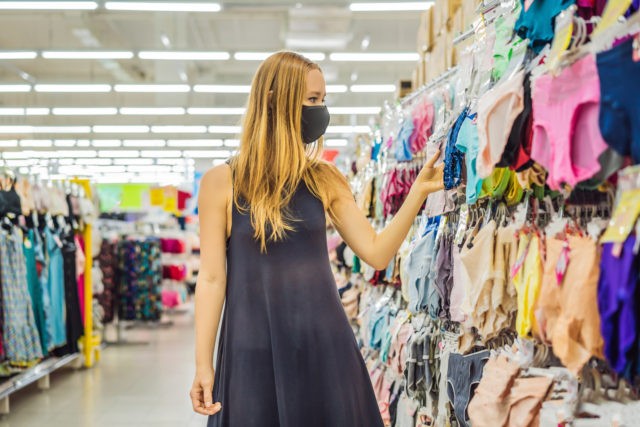The prices of apparel did something in November that they haven’t done in quite a while. They rose.
The coronavirus pandemic has changed the way people all over the globe live their day-to-day lives. People are not going to movies, they are shut out of sports stadiums, concerts have been canceled, airline travel has shriveled, and we eat out far less.
We’re also buying a lot less clothing than we did. As a result, consumer prices for apparel have crashed this year.
Take men’s suits. This category has seen sinking demand for years due to increasingly casual dress codes in many offices. Work-from-home put that trend into overdrive. The price of men’s suits, sportscoats, and outerwear is down 21.4 percent compared with a year ago, according to Consumer Price Index data released by the Department of Labor on Thursday. Men’s shirts and sweater prices are down 7.4 percent. Men’s pants moved into positive price territory in November, up a half percentage point compared with a year ago.
But in November, men’s suits and outerwear prices jumped 2.2 percent. Overall, apparel prices rose nine-tenths of a percentage point in November.
But in many categories, the year on year declines are still dramatic. Women’s apparel prices have crashed. Dress prices are down 13.5 percent and women’s suit prices are down 9.9 percent. Dress prices rose 3.1 percent in November while suit prices fell 2.7 percent.
Footwear prices dropped this year. Men’s shoes are down 2.4 percent. Women’s shoes 3.4 percent.
Interestingly, the prices are boys clothes are down 7.1 percent while the prices of girls clothes are up 2.1 percent. This may be an indication that families are willing to spend more on girls clothes in the age of remote schooling than boys clothes.
Another divergence is in the category of “underwear, nightwear, swimwear, and accessories.” Women’s prices have fallen 3.8 percent over the past year. Men’s prices, on the other hand, are up 3.2 percent.
“Women spend less on undergarments when they leave the house less frequently, while men may be loading up on pajamas as they work from home,” one buyer for a major retail outlet said.
Prices reflect not just demand but supply. Some of the upticks in pricing may reflect manufacturers and retailers reducing inventory by even more than demand has declined.
Infants and toddler’s apparel is down 4.5 percent from a year ago but made a big rebound in November, rising 3.5 percent from a year earlier.

COMMENTS
Please let us know if you're having issues with commenting.